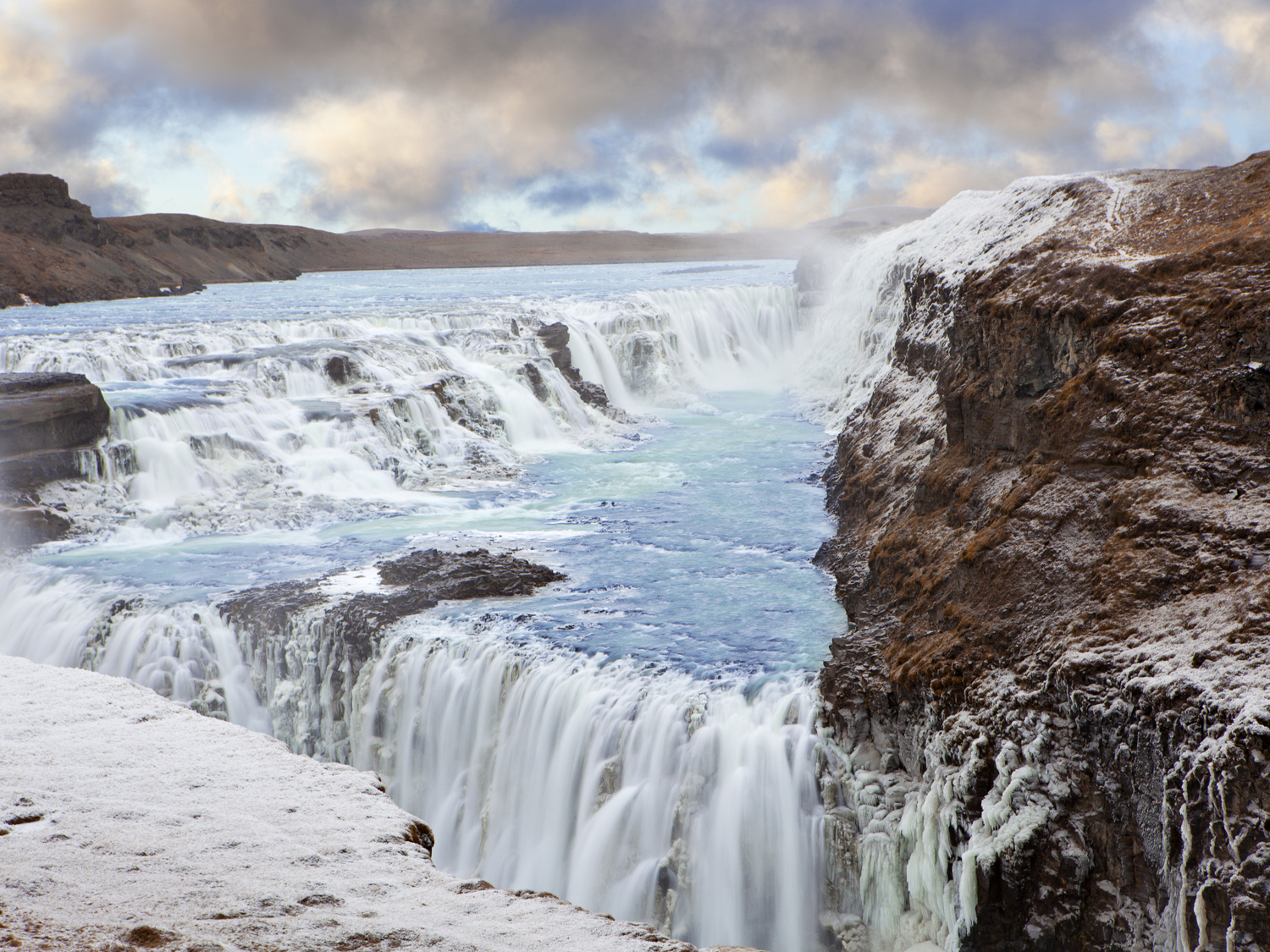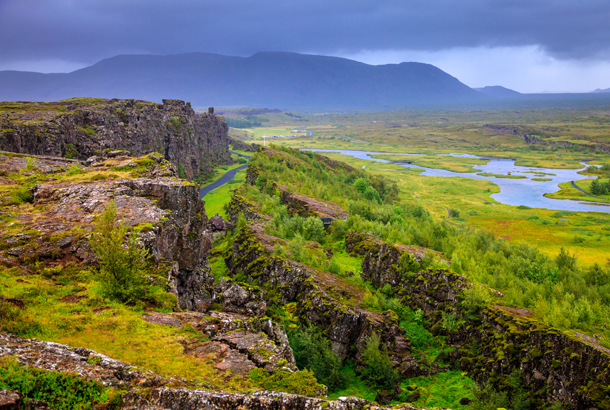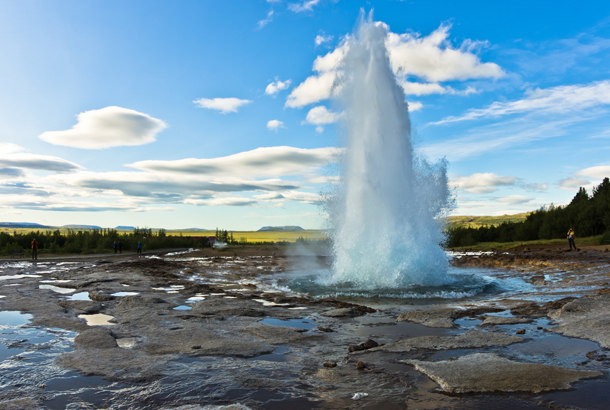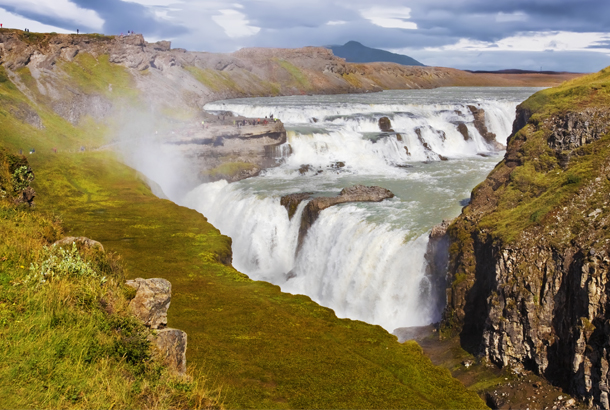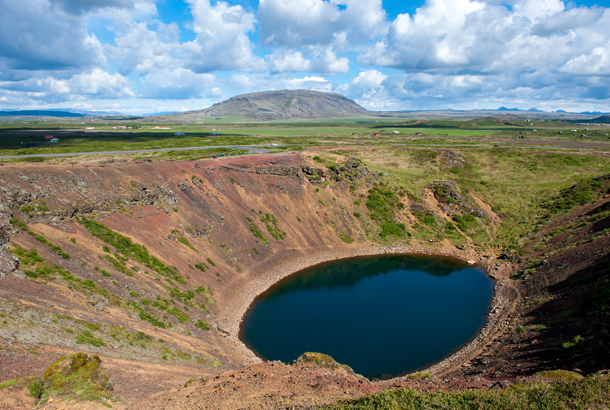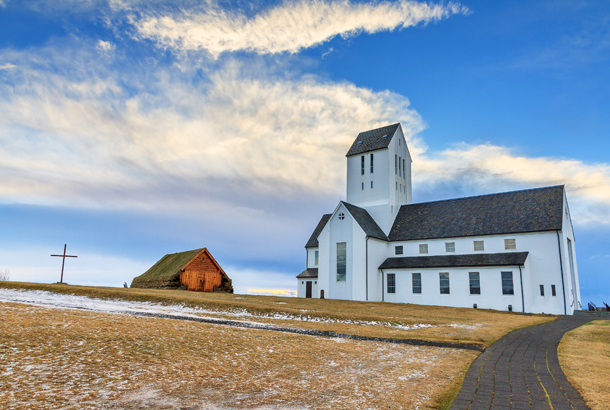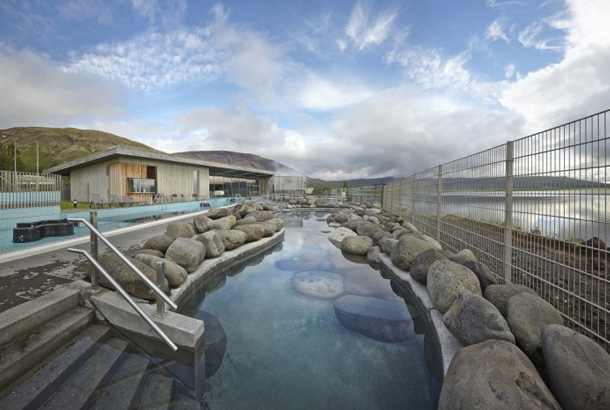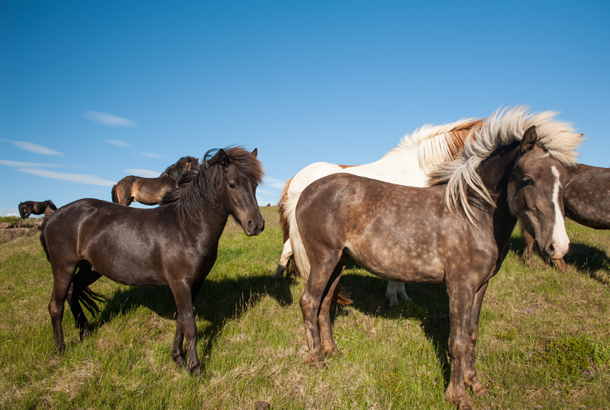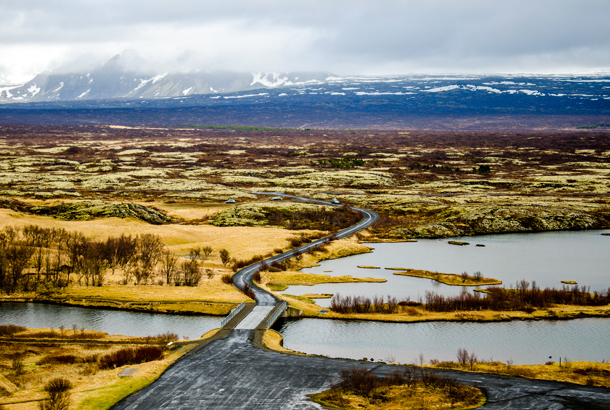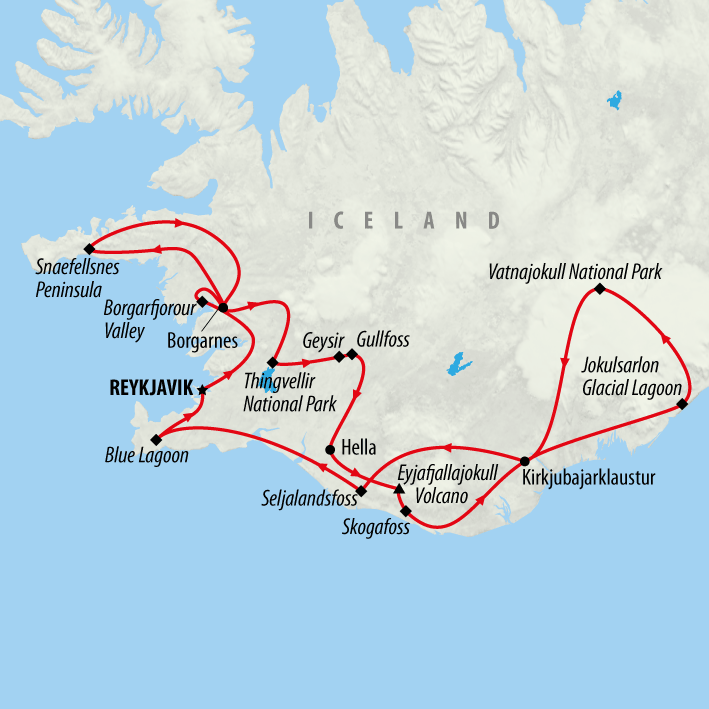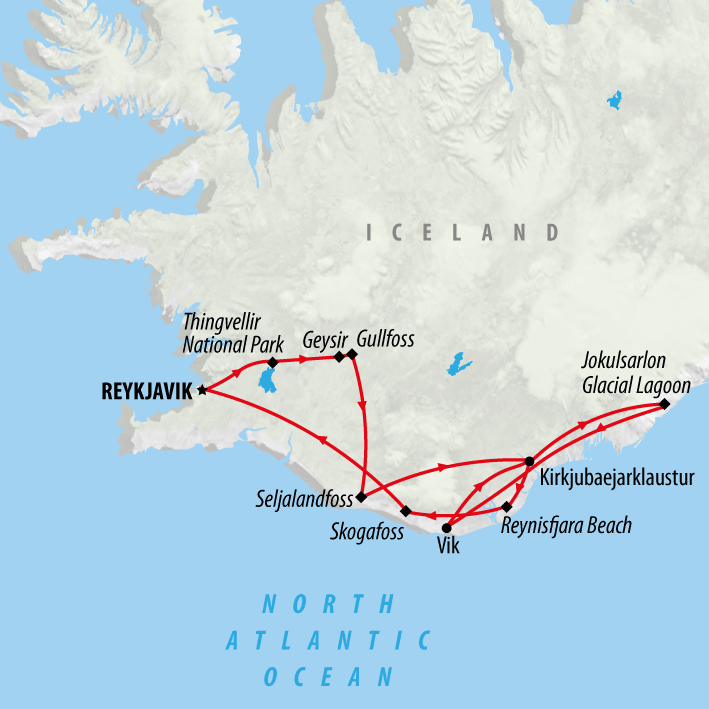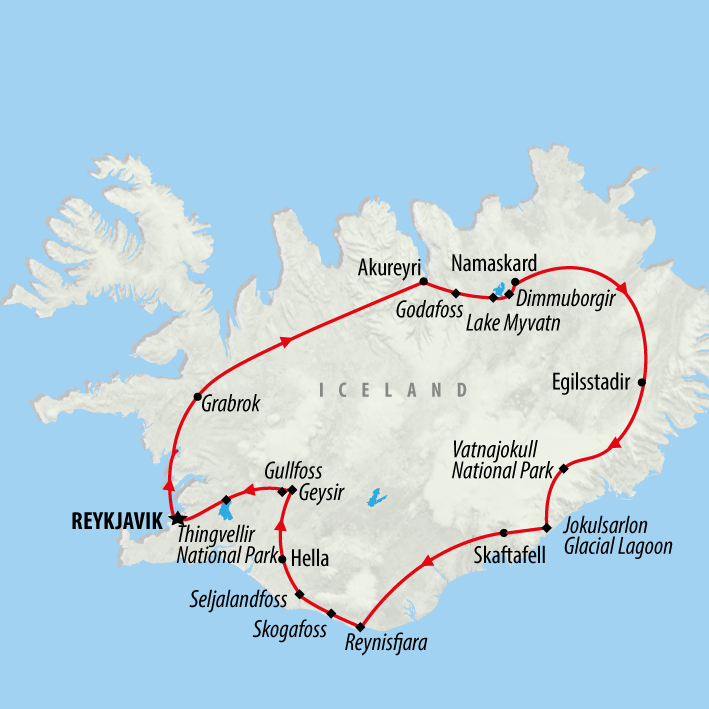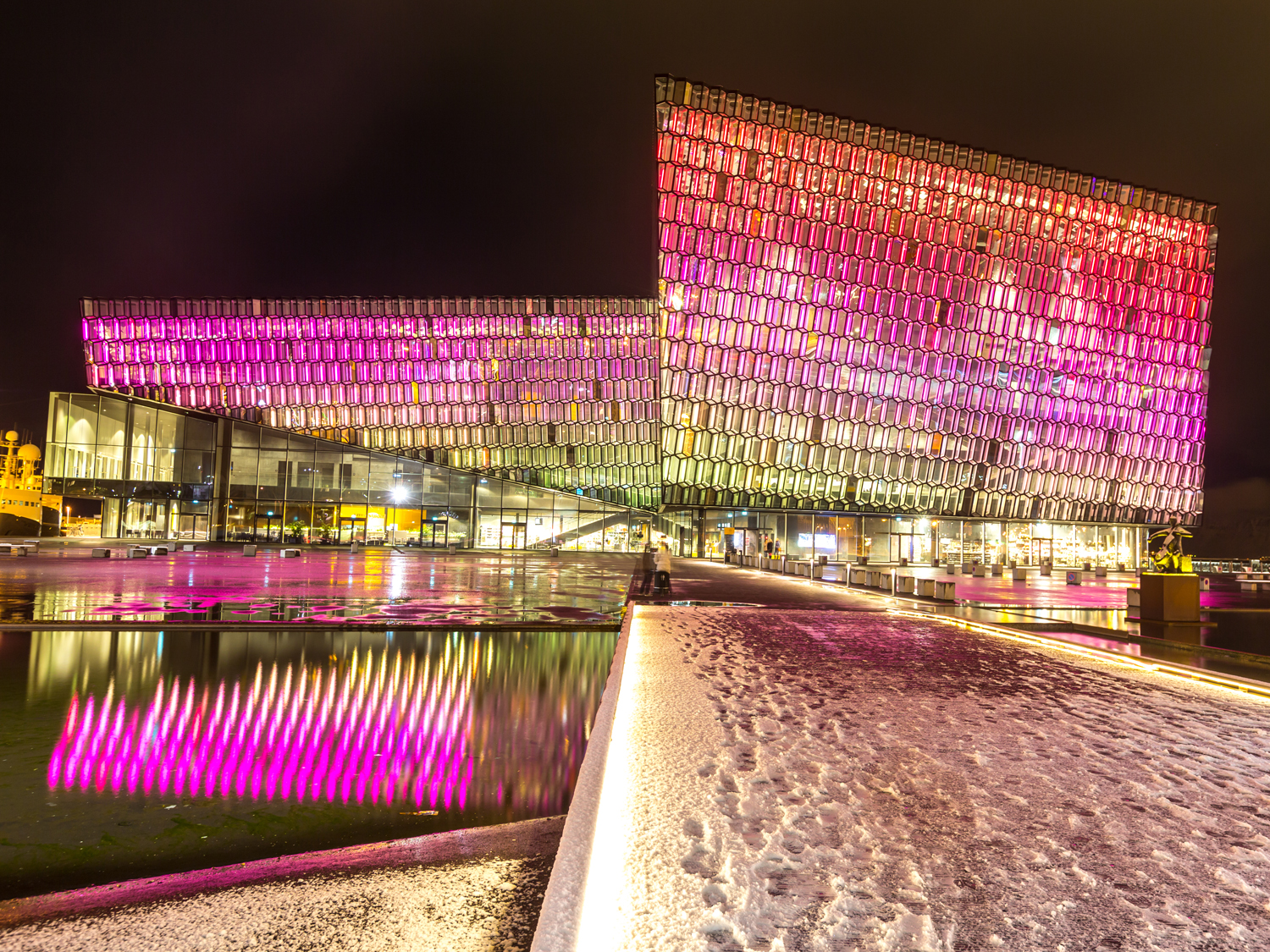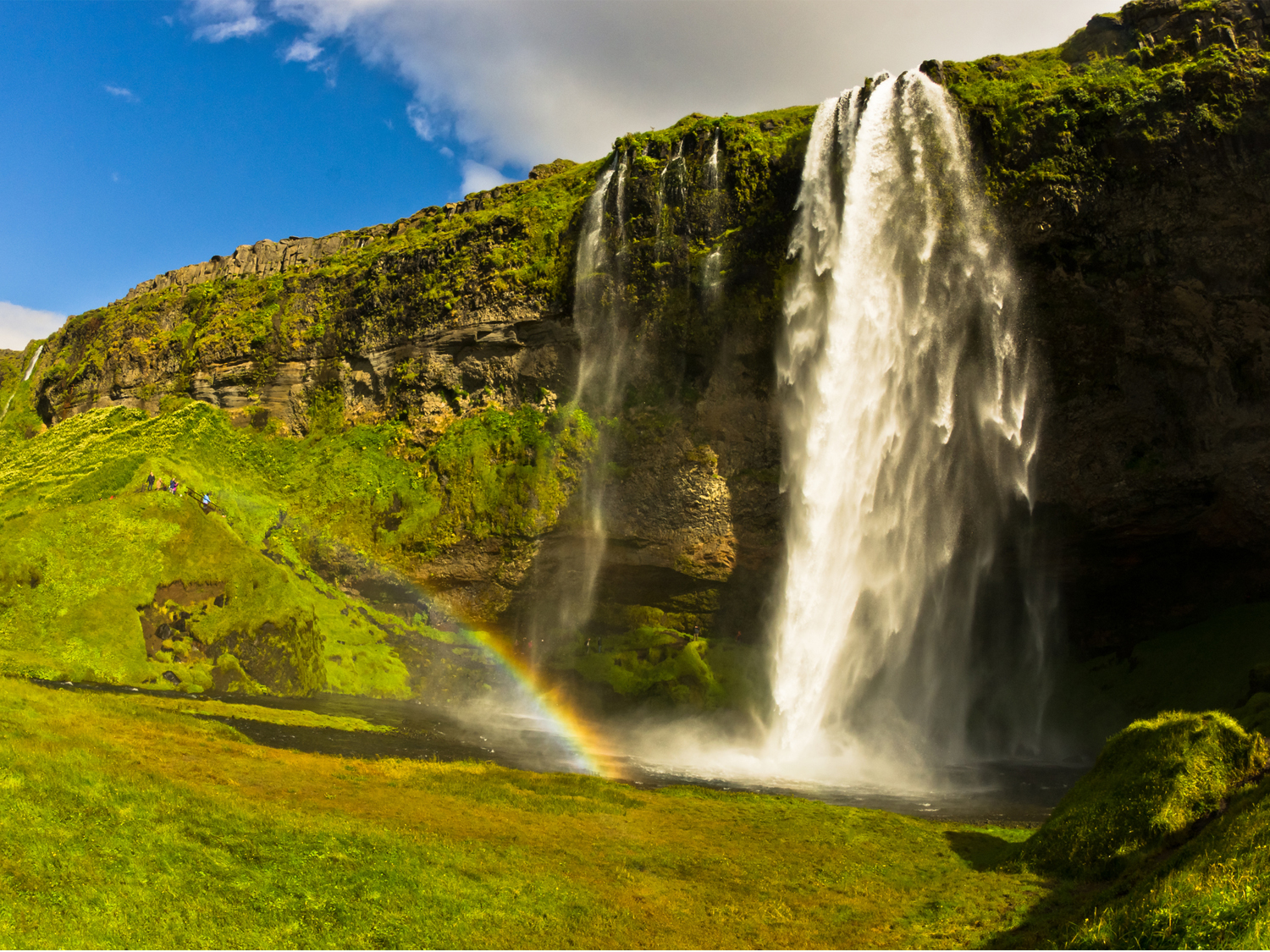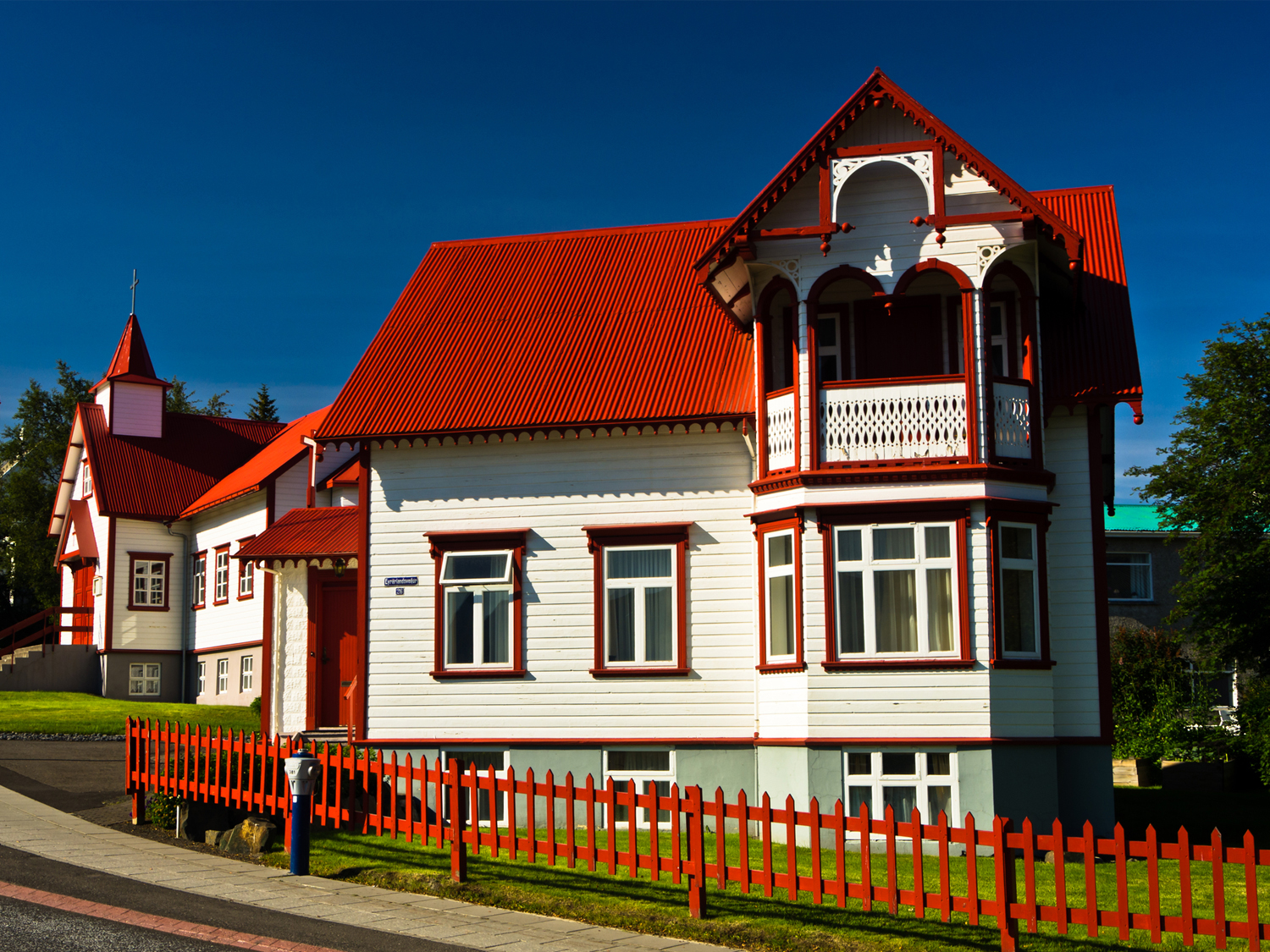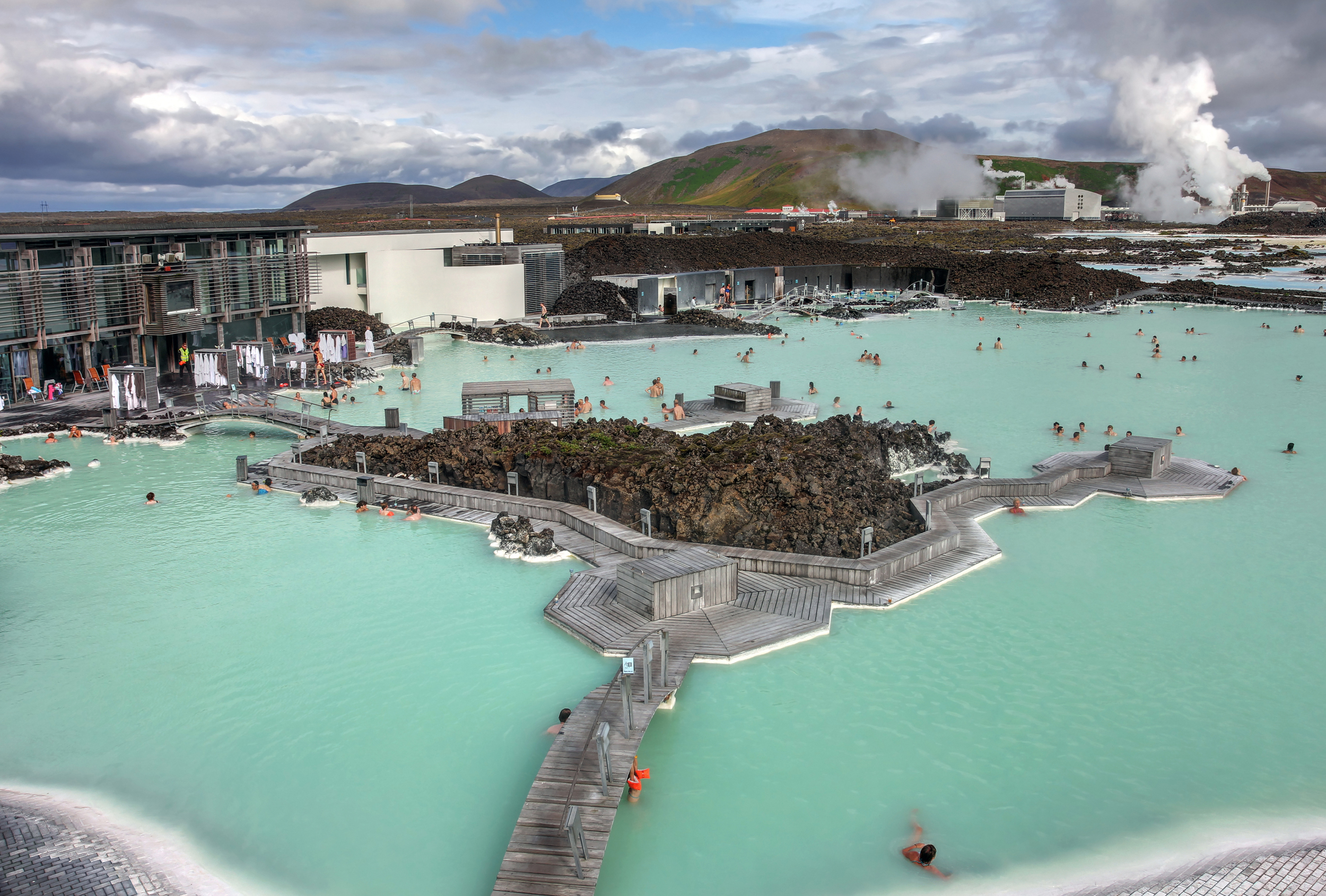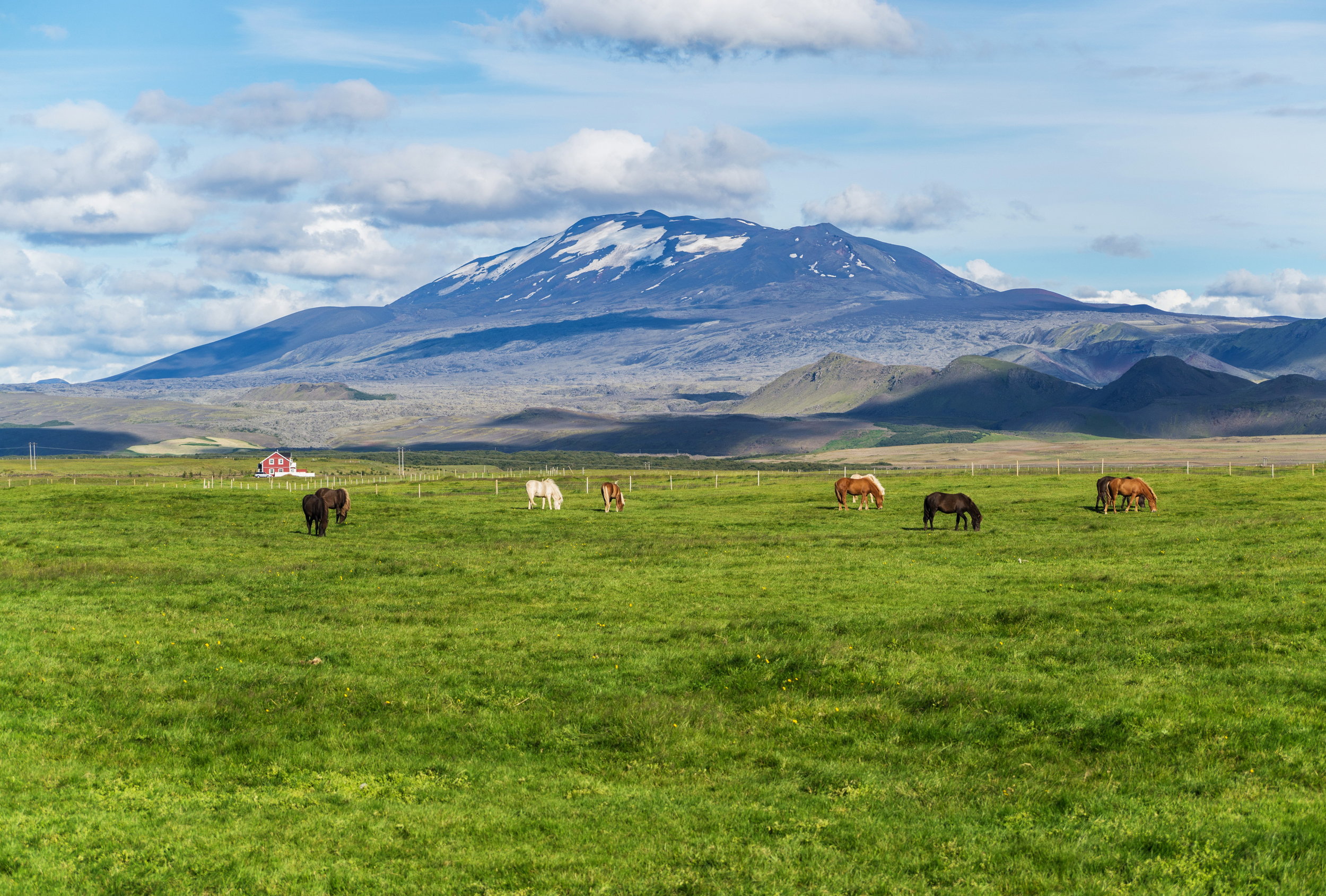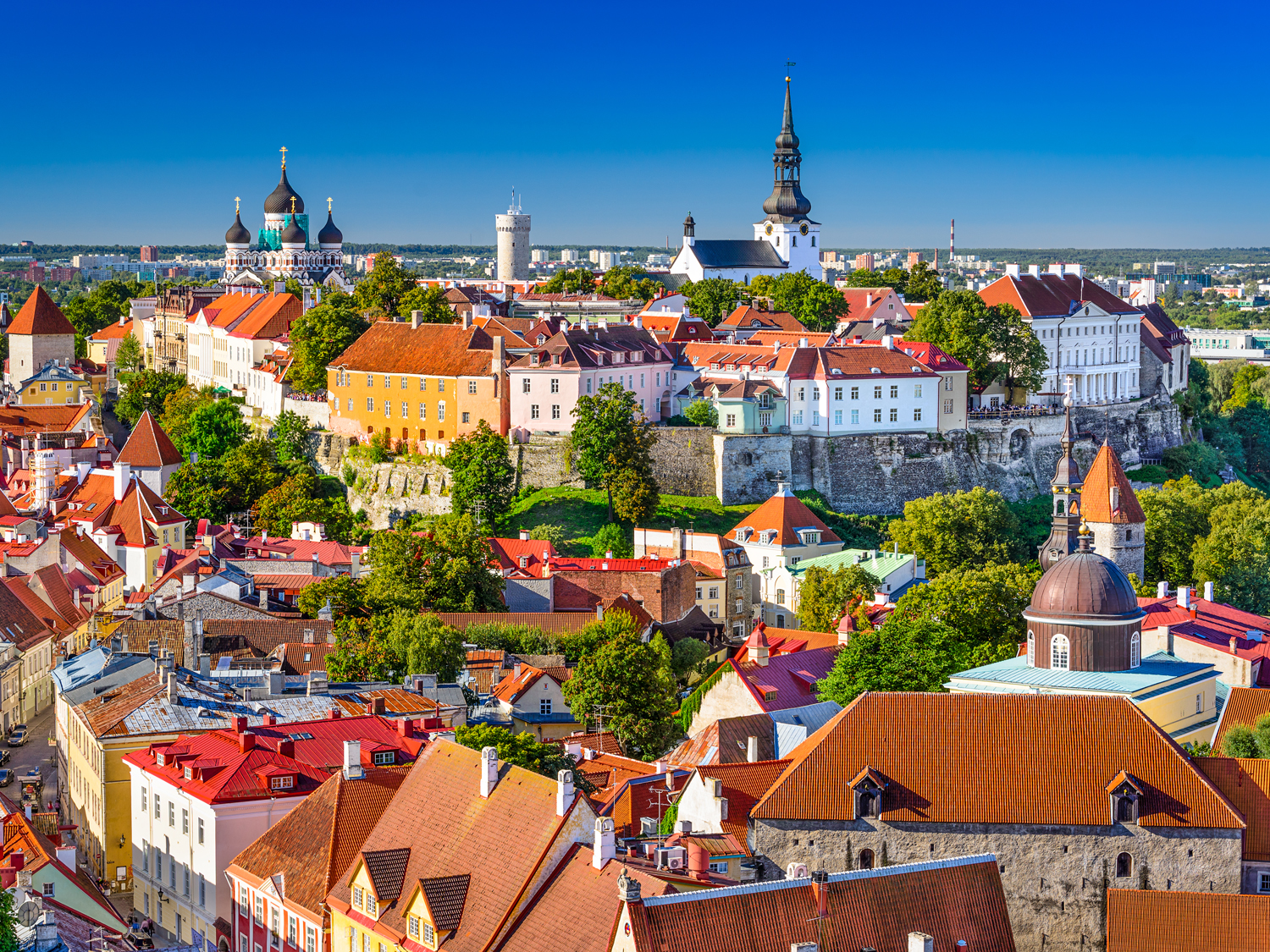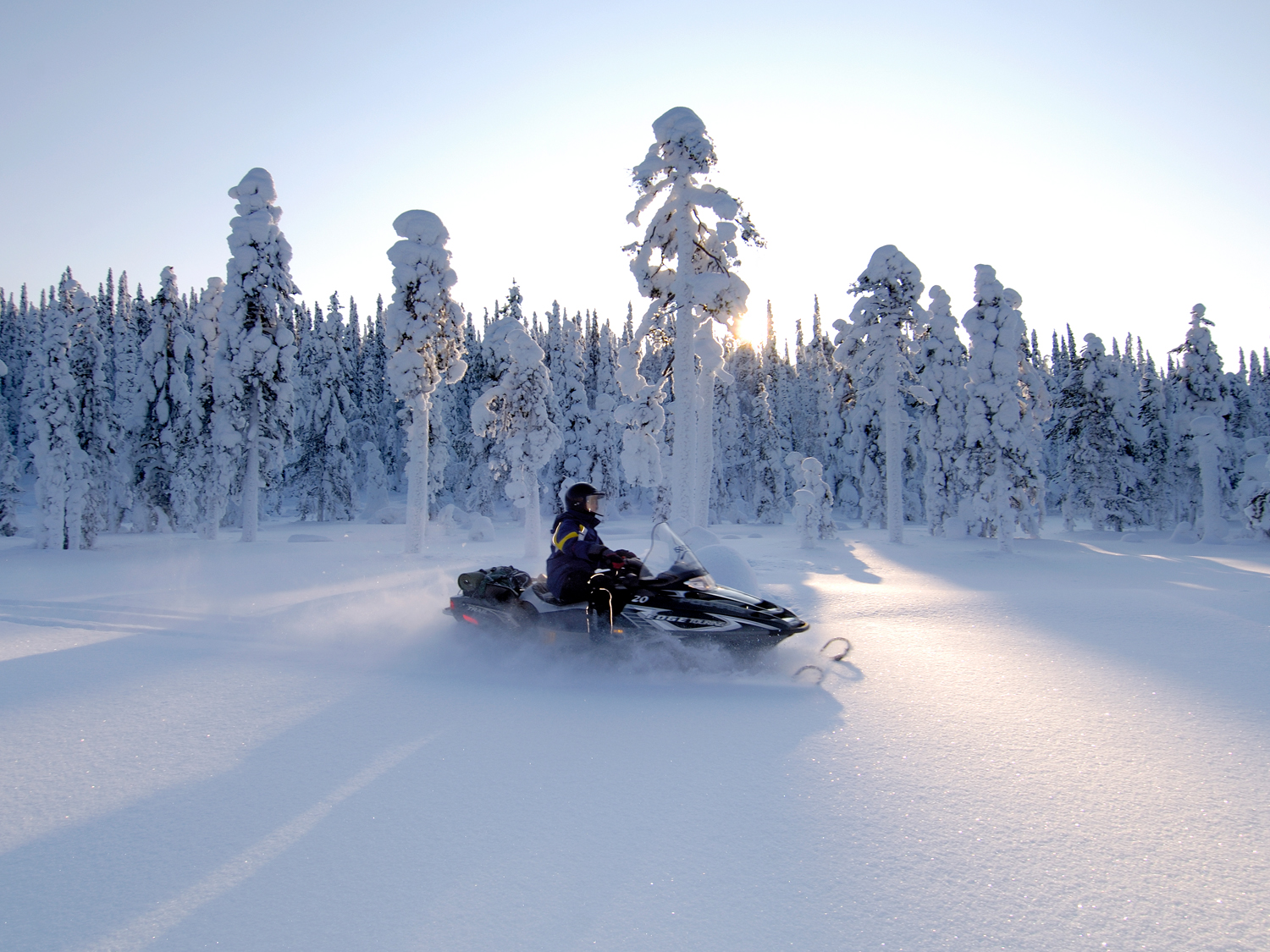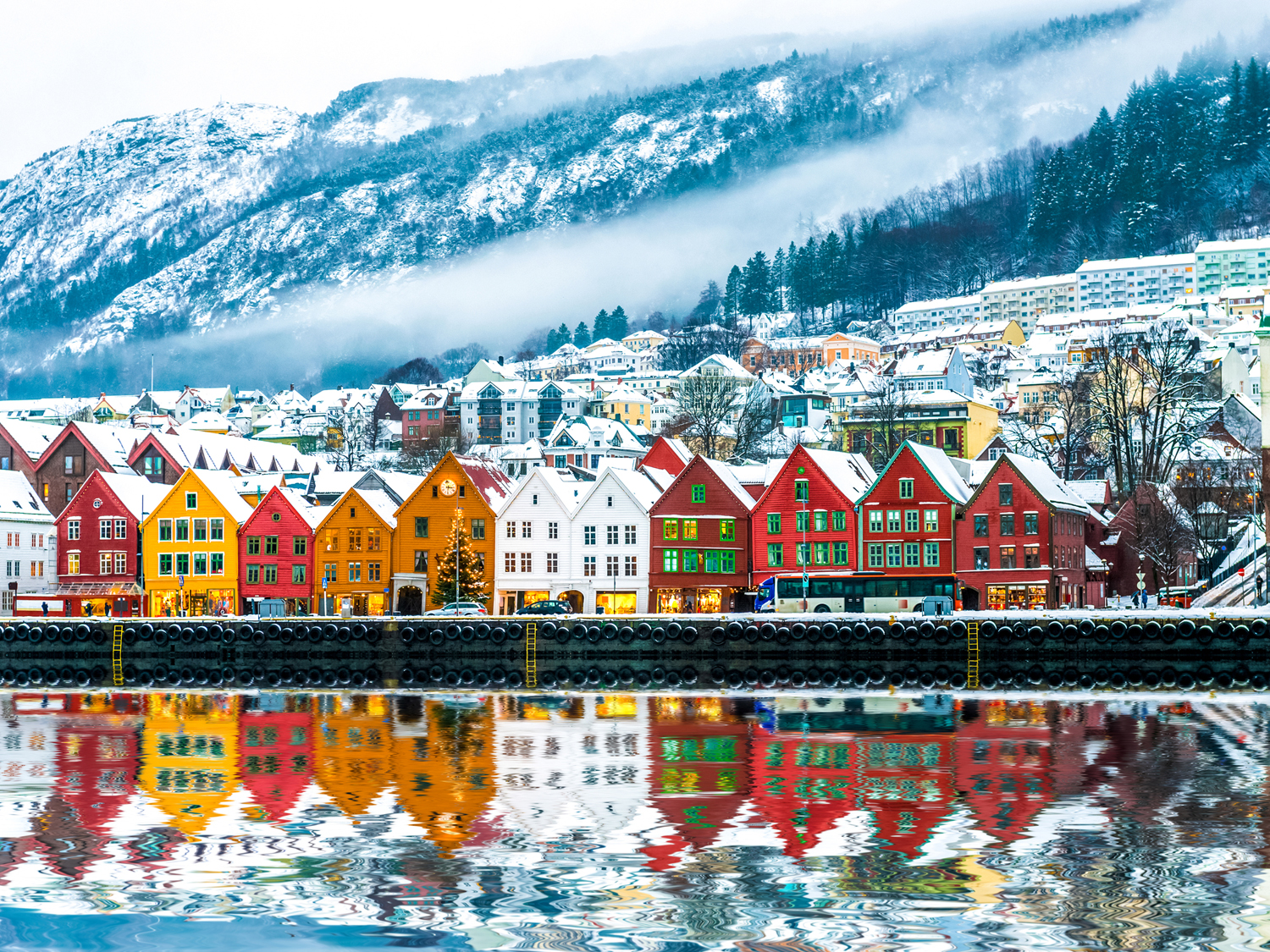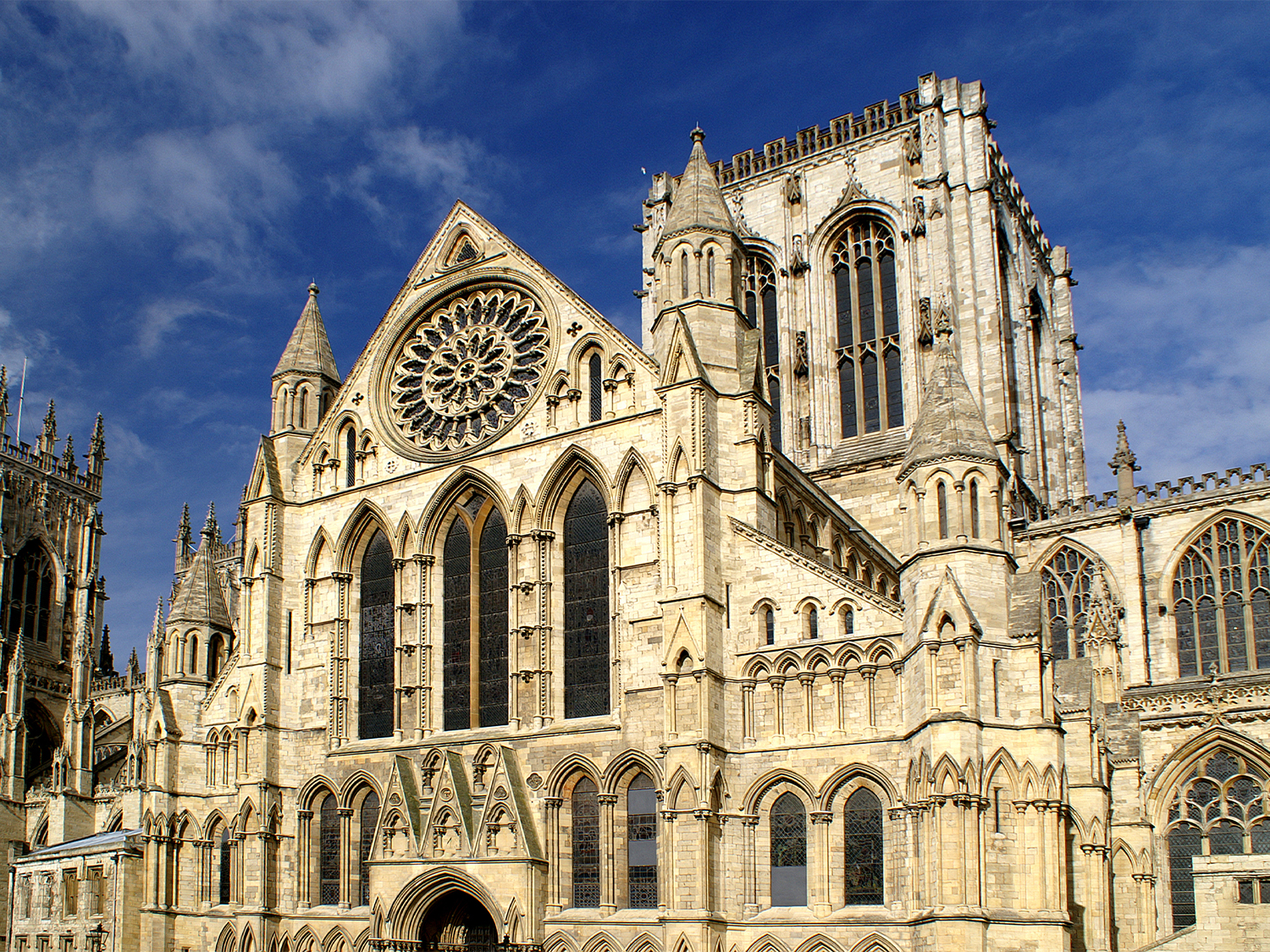A Guided to Iceland's Golden CircleGolden Circle Iceland Tours
When do you want to go?
2024
I'm flexible
Passengers
Adults (18+)
Children (0 - 17)
What is the Golden Circle in Iceland?
The Golden Circle is a popular route that spans 300km, starting in Reykjavik and heading out east before looping around and winding up back in the capital. Every year it attracts travellers on guided tours. Encompassing some of the world’s most breath-taking natural landmarks, the Golden Circle is the perfect way to experience the very best that magical Iceland has to offer. Here are some of the most famous stops you will make along your journey, as well as a few lesser-known ones that are certainly worth a visit. The whole route can be completed in a day, but it can be stretched out over two or even three days if you have a lot of time on your hands.
Major sites in the Golden Circle
Most visits to Iceland's Golden Circle focus on three key sites: the rugged Thingvellir National Park, the geyser-filled region of Haukadalur, and the mighty Gullfoss waterfall. These are the perfect introduction to Iceland's varied landscapes, and it's easy to visit all three of these sites on a day trip from Reykjavik.
Thingvellir National Park
Just 40km from Reykjavik is the breath-taking, UNESCO-listed Thingvellir National Park, an area characterised by its location within a rift valley. Here, grassy slopes trail off to the horizon, providing visitors with plenty of secluded hiking paths and opportunities to slow down and snap some shots of the incredible landscape. Not only is the park a place of rugged, natural beauty, with its staggering tectonic rifts, but it is also one of the most important historical sites in the country. It was here that the world’s oldest existing parliament first assembled all the way back in 930 AD. The park also encompasses the largest natural lake in Iceland, a popular venue for fishing and scuba diving as the continental drift makes for perfect visibility.
Haukadalur
Beside the Northern Lights, the geysers of Iceland might be some of the country’s most famous features, and nowhere are they more impressive than Haukadalur. The two main geysers here are Strokkur and Geysir, the latter of which is actually the origin of the word geyser. Of the two features, Strokkur is the more reliable, erupting every 5-10 minutes. Geysir is much bigger but erupts far less frequently, meaning that witnessing this spectacle is a rare treat. Other than the main two geysers, there are dozens of hot springs, mud pools, and fumaroles in the surrounding area, many giving off a rather unpleasant smell, similar to rotten eggs, because of the sulphur.
Gullfoss Waterfall
The Gullfoss Waterfall is one of those natural features that literally stops you dead in your tracks as you come to terms with the sheer size and power of it. This magnificent cascade is a stark reminder of the force of Mother Nature and how small we are in comparison. Looking down into the ravine where the water plunges, the spray is sometimes so thick that you cannot even see the pool below, making it seem like the waterfall simply disappears or goes on forever. The waterfall is tiered, the first step dropping down 11 m and the second a staggering 21 m. There is a viewing platform just above the top of the falls, which commands unparalleled views and is perfect for anyone hoping to snap a couple of nature shots.
Lesser known sites in the Golden Circle
While the three sites listed above steal the limelight of the Golden Circle, there are a number of smaller and less well-known sites that can be visited along your route. The benefit of visiting these smaller sites as well as the more well-known sites is that you can go from being surrounded by other tourists to perfect seclusion and back again as you make your way along the route—the perfect balance for any sight-seeing expedition.
Kerid Crater Lake
Perhaps the most famous of the less famous sites on the Golden Circle route, the Kerid Crater Lake is a stunning, almost perfectly circular lake that sits at the bottom of a crater. The rugged slopes that encircle the water are tinged with varying shades of mottled red, green, and brown because of the volcanic rock and sparse vegetation that intertwine here. The multi-coloured earth clashes brilliantly with the aquamarine water, creating an irresistible sight for photographers. The caldera is roughly 55 m deep and is one of many volcanic craters in the area, although this one is arguably the most recognisable.
Skalholt Cathedral
Relatively large in comparison to other Icelandic cathedrals, the Skalholt cathedral is a white-washed building with a black tiled roof and beautiful stained-glass windows. The current cathedral itself has been preceded by almost a dozen other churches, many of which were made of wood. The earliest of these churches was built in the 12th century, and all of them were either burnt down or destroyed by the weather over the course of history. The cathedral that stands here now was completed in 1963 and houses a stone coffin that contains Páll Jónsson, a bishop who died in 1211.
Laugarvatn Fontana
If all that driving has made your muscles ache, then Laugarvatn Fontana is the perfect place to stop off for an hour or two. The site consists of numerous natural steam baths that have been built over geysers and is ideal for taking a quick dip and unwinding before carrying on your journey. The spa offers special rye bread tours, during which guests will get the chance to see the famous Icelandic rye bread being dug out of the hot ground and served up, hot with some butter. Even if you don’t fancy getting wet, this place shouldn’t be missed, as they have a viewing deck, which offers unrivalled views of the adjacent lake and mountains.
Icelandic Horses
While this isn’t exactly an individual stop, there will be a number of places along the Golden Circle route where you can stop and see Icelandic horses. These unique equestrian creatures are smaller than average horses, and standing at just 13 or 14 hands, they would be considered ponies anywhere else in the world. Other distinguishing characteristics are their longer, shaggier coats, which have been specially adapted for the cold weather, and their ability to perform two additional gaits as well as the classic walk, trot, canter, and gallop that other horses can do. These two extra gaits are called ‘the flying pace’ and an ambling gait known as ‘Tolt’. These horses are very calm, so you needn’t be scared of petting them when you stop to see them.
Nesjavallaleið
Again, this isn’t a stop per se, but it is definitely something worth doing on your trip. This is a road that leads from Reykjavik all the way to Thingvellir National Park and is sure to be one of the most beautiful drives you have ever done. There are no stops along the route, but the scenery all around you is so gorgeous that you won’t even mind, and your drive will simply fly by. Be wary that this road is not very well maintained and can be completely out of action during the winter as snow makes it impassable.
When to visit the Golden Circle, Iceland
Iceland is notorious for its unpredictable weather, so it is advisable to take warm clothes and waterproofs with you regardless of when you choose to go. It’s also important to note that it is often much colder out in the countryside compared to Reykjavik. Each season will offer a completely unique experience, so plan your trip according to what kind of scenery you want to see and whether you prefer a warm or cold climate.
Visiting Iceland's Golden Circle in winter
Winter in Iceland poses one fundamental challenge—a lack of daylight hours. While this isn’t a problem for those seeking the Northern Lights, it can be frustrating for nature-lovers who want to explore the country’s rugged wilderness and take photos as they go. However, winter is beautiful, and the blankets of white snow that cover the land are unfathomably stunning, but travelling during this time means you will have limited time to admire the land each day, meaning you might need longer to see everything on your itinerary. It can also get really, really cold!
Visiting Iceland's Golden Circle in summer
On the other hand, summers in Iceland are bathed in eternal daylight as the midnight sun phenomenon comes into effect. The weather improves dramatically during this time of the year, and you're less likely to get frozen by a bitter wind or caught in a sudden downpour. When it comes to exploring the great outdoors, summer is probably the best time to travel, though the months of July and August can get pretty crowded. It is also a good idea to take an eye mask with you, as the constant light can make it hard to sleep at night.
Visiting Iceland's Golden Circle in spring and autumn
Spring and autumn are equally as pleasant for visiting the Golden Circle. Temperatures will be drastically warmer than winter, but the summer crowds won’t be there, obscuring your view and making noise. Coincidentally, these seasons are also decent for viewing the Northern Lights, so if you are hoping to combine your Golden Circle trip with an evening of aurora searching, then spring and autumn are ideal. If you want a white landscape, there is usually some leftover snow in early spring and a few pre-winter flakes in late autumn.
Tours to Iceland's Golden Circle
Take a guided tour of Iceland’s Golden Circle with us at On The Go Tours. The benefit of travelling with a group is that you don’t need to worry about driving yourself – car rental can be expensive, and Iceland’s weather is unpredictable, meaning driving conditions can be far from ideal. You also don’t need to worry about getting lost and you might even make some friends. We include the three key sites of the Golden Circle on all of our Iceland tours but here is a selection of our most popular trips that also feature time spent hunting for the Northern Lights and more of Iceland's countryside for outdoor adventure throughout the year.
Frequently asked questions
What is golden circle in Iceland?
The Golden Circle is a popular tourist route that includes three main attractions: Thingvellir National Park, the Geysir Geothermal Area, and Gullfoss Waterfall. The Golden Circle offers a diverse glimpse of Iceland's natural beauty and geological activity, making it a must-see for visitors.
Where is the golden circle in Iceland?
The Golden Circle is located in southwestern Iceland, near the capital city of Reykjavik. The route typically begins in Reykjavik and extends eastward into the southern highlands, covering a roughly 300-kilometer loop. The main attractions are all within a few hours' drive from Reykjavik, making the Golden Circle a convenient and accessible day trip for tourists.
Can you do the golden circle in one day?
Yes, you can complete the Golden Circle in one day. The entire loop is around 300 kilometers (186 miles), and the key attractions are all within a few hours' drive from Reykjavik. Most guided tours and self-drive itineraries allocate a full day for the journey, allowing time to explore each site and enjoy the scenic landscapes along the route. Starting early in the morning will give you ample time to visit each landmark and return to Reykjavik by evening.
How long is the golden circle in Iceland?
The Golden Circle in Iceland is approximately 300 kilometers (about 186 miles) in length, the loop starts and ends in Reykjavik and can be comfortably completed in a day, with plenty of time to stop and explore each of the key sites along the way.
Popular sites to see in Iceland
Tours to similar destinations!
Our customers say
Excellent
4.4 out of 5 based on 275 reviews
